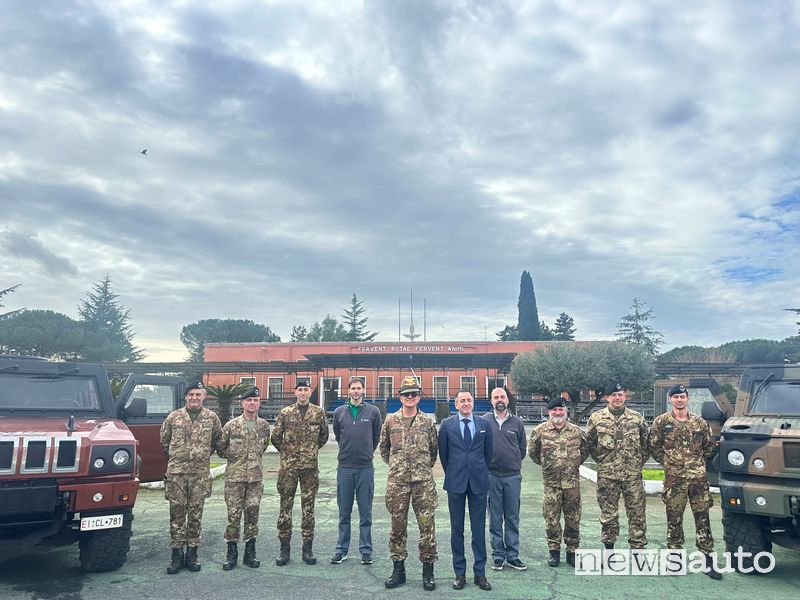There review of military assets it is a complex and detailed process that requires the use of highly qualified and specialized personnel. The operations of revision must be carried out scrupulously and rigorously, in order to guarantee the safety and efficiency of the means supplied to the Armed forces.
Review of military vehicles
There review of military assets, like what usually happens for civilian vehicles, it is a crucial process to ensure that they are in optimal operating conditions. This process may vary depending on the type of vehicle and the specific needs of the army or military organization involved. Reviews of military vehicles are carried out at the inspection lines equipped with the Army Italian.
However, there are some general practices common to the overhaul of military vehicles. Here are some key aspects:
- Preventive maintenance: Regular maintenance is essential to prevent breakdowns and extend the useful life of military vehicles. This includes replacing filters, lubricants and other components subject to wear.
- Periodic inspections: Military vehicles undergo regular inspections to identify any defects or problems. these inspections can be scheduled at regular intervals or in response to reports of malfunctions.
- Functional tests: Vehicles must undergo extensive functional testing to ensure that all systems, including critical ones such as engine, transmission and communications systems, are functioning properly.
- Updates and improvements: During the overhaul, it may be appropriate to install hardware or software updates to improve the performance or safety of military assets.
- Verification of environmental and safety regulations: Military vehicles must comply with environmental and safety regulations. This could include testing emission control systems, compliance with safety standards and waste management.
- Crew training: During the overhaul, it is important to provide training to the crew on changes made to the vehicles or new features introduced.
- Detailed registration: All review activities must be carefully recorded. This includes details on parts replaced, updates made and test results.
- Compliance documentation: Documentation of compliance with military regulations and specifications is essential. This documentation may be required for audit purposes or to meet regulatory requirements.
Military vehicle inspection checks
The checks required for the overhaul of military vehicles are numerous and vary depending on the type of vehicle and its specific characteristics. However, it is possible to identify some controls common to all military vehicles:
External controls:
- Bodywork: check the integrity of the bodywork, absence of dents, rust or other damage.
- Tyres: check the state of wear of the tyres, pressure and correct inflation.
- Crystals: check the integrity of the crystals, absence of cracks or breaks.
- Lighting system: check the correct functioning of headlights, lights, indicators and other lighting devices.
- Signaling system: check the correct functioning of sirens, horns and other signaling devices.
Internal controls:
- Seats: check the integrity and safety of the seats.
- Seat belts: check the correct functioning of the seat belts.
- On-board instruments: verification of the correct functioning of the on-board instruments, such as speedometer, tachometer, fuel level and temperature indicators.
- Air conditioning system: check the correct functioning of the air conditioning system.
Mechanical controls:
- Engine: check the correct functioning of the engine, absence of oil or other liquid leaks.
- Transmission: check the correct functioning of the transmission, absence of abnormal noises.
- Brakes: check the correct functioning of the brakes, check the brake fluid level.
- Steering: check the correct functioning of the steering, no play or abnormal noises.
- Suspensions: check the correct functioning of the suspensions.
Electrical controls:
- Electrical system: check the correct functioning of the electrical system, absence of short circuits or current leaks.
- Batteries: check the correct state of charge of the batteries.
- Alternator: check the correct functioning of the alternator.
Road tests:
- Braking test: verification of the efficiency of the brakes during normal and emergency braking.
- Acceleration test: verification of engine performance during acceleration.
- Road holding test: verification of the road holding of the vehicle when cornering and on uneven surfaces.

Maintenance: at the end of the checks, the vehicle is subjected to the ordinary and extraordinary maintenance interventions foreseen in the use and maintenance manual.
Final test: at the end of the maintenance interventions, the vehicle is subjected to a final test to verify its suitability for circulation.
Dekra and the training of military personnel responsible for inspections
The Army has total autonomy over these checks, operating in parallel with private testing centres. THE checks are carried out at the Army inspection lines. With the aim of training the military School of Transport and Materials (TRAMAT) completed an information course commissioned by Dekra Italiaaimed at Head of Maintenance Management of some departments in the Roman area. The course focused on implementing technical knowledge for management of vehicle inspections.

The main objective of the course was to align the skills of military technical personnel on the periodic technical checks that military vehicles must regularly undergo, similarly to civilian ones, to ensure compliance with the Highway Code.
The course, lasting two weeks, integrated theoretical and practical sessionsincluding practical moments at the Army and Dekra review lines.
Read also:
→ Where to do the review
→ When does the inspection expire?
→ How much does a car inspection cost
→ What are the controls?
→ Fine for expired inspection
→ Foreign license plate car inspection
→ LPG and methane car inspection
→ Periodic inspection of agricultural tractors
→ What do you think? Drop by discussions on the FORUM!
#Review #military #vehicles #DEKRA #training